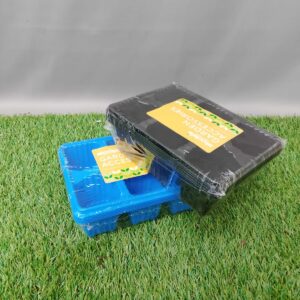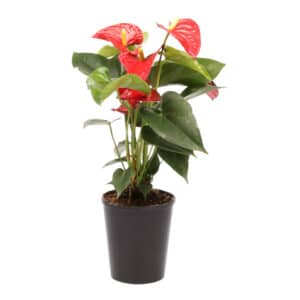The Magic of Bulbs
DIY and how-to

The Magic of Bulbs
Plant spring-flowering bulbs in April for a stunning garden display in September.
Spring-flowering bulbs provide the garden with a touch of magic. They might not look like much when you buy them, but those little bulbs hold the promise of enchantment to come. Throughout winter, they will busily grow, ready to push their green shoots through the bare earth in a few weeks’ time, and then show off their glorious blooms as spring arrives. Life is a garden filled with this magic, and now is the time to do your planning, planting and purchasing of spring-flowering bulbs.
Bulbs will available in garden centres from the end of March until the end of April. Packaged bulbs have clear instructions for the time of planting, planting depth, height of growth and light requirements, but here are some great tips for bulb success:
Choose the right spot :
To get the best from your bulbs, plant them where you can enjoy their glorious display to the full, either in a border in full view of the house, or in containers on the patio. Remember that anemones, ranunculi and indigenous bulbs (except freesias) like a position in full sun, daffodils prefer morning sun, or partial sun, and freesias, hyacinths and grape hyacinths prefer semi-shade.
Remember that spring-flowering bulbs don’t fare well in areas with excessive heat radiation as they prefer cool soil. Avoid areas long driveways, paths or sunny walls unless you can provide some form of protection from the heat. Daffodils, tulips and hyacinths are particularly susceptible.
Have a planting plan :
Only plant spring-flowering bulbs once summer’s heat has left the soil – usually after Easter. Remember that tulips, however, should only be planted in May. Find out the height of the bulbs when in flower – the packaging on the bulbs will give you this information. The general rule is to plant the shorter blooms at the front of the border and the medium to tall ones behind them.
For container plantings, make sure the pot has the right depth for the chosen bulbs. A depth of about 10-15cm will suit most bulbs, but ranunculi, ixias, daffodils and tulips need a deeper container. For success when planting bulbs in pots, make sure the pot has adequate drainage but never allow the bulb roots to dry out and place pots in a semi-shaded position and water every day.
Soil Preparation :
Prepare your bulb beds or containers at least a week before planting to allow fertilisers time to dissolve, otherwise they may burn the bulbs. Before planting, dig the soil over to about the depth of a spade and add a generous amount of compost – bulbs do best in cool, well-drained soil. Dig in a handful of planting fertiliser or bonemeal per square metre to a depth of 30cm and water well. Avoid using fresh manure as this may burn the bulbs. For pots, add water-retaining granules to help the soil retain water during the dry winter months.
Feed throughout the growing season and after flowering with 3:1:5 Vita Flower or Hadeco 2:1:1 Bulb Food.
The right depth :
Different bulbs need to be planted at different depths and spaced accordingly, so read the planting instructions on the pack carefully. Usually, bulbs should be planted at a depth of three times the actual height of the bulb. Space large bulbs 10-15cm apart and small bulbs 3-5cm apart. Never press the base of the bulb hard into the soil because it will compact. If you have it, place a tablespoon of river sand under the bulb to ensure a secure but not too tight base.
Choose Healthy Bulbs :
Select firm, healthy bulbs and not those that are diseased, or which have sprouted. Plant out as soon as possible after purchase.
Planting ideas – For the best effect, plant bulbs in large groups and drifts and intersperse them with spring-flowering annuals such as pansies and primulas. Only plant the annuals once the green foliage tips of the bulbs are showing, so that you do not damage the bulbs under the soil.
Water regularly :
It is essential to start watering as soon as your bulbs are planted, because if the bulbs are lacking water they may fail to flower. Even though no foliage is showing, activity is taking place. The bulb establishes itself by putting out its root system – and for this it needs moisture. It is best to water bulbs with a sprinkler for 40 minutes every 4-5 days. Add a layer of mulch to the soil to help retain moisture.
If your bulbs are planted amongst ground covers, be extra vigilant about water as there is more competition for available moisture. This is also true if your bulbs are in containers as the moisture in pots dries out quickly and may need topping up every day or two.
You might also like
Shop online
-
TRAY SEEDLING 6 PACK BLACK OR BLUE
- R39.99
- Select options This product has multiple variants. The options may be chosen on the product page Learn More




